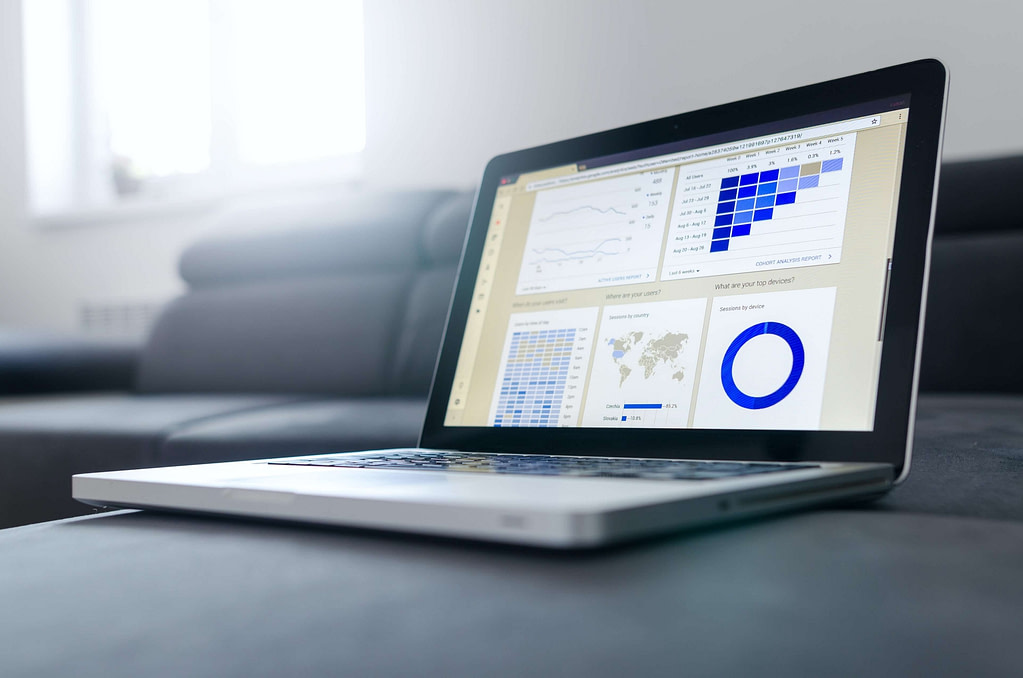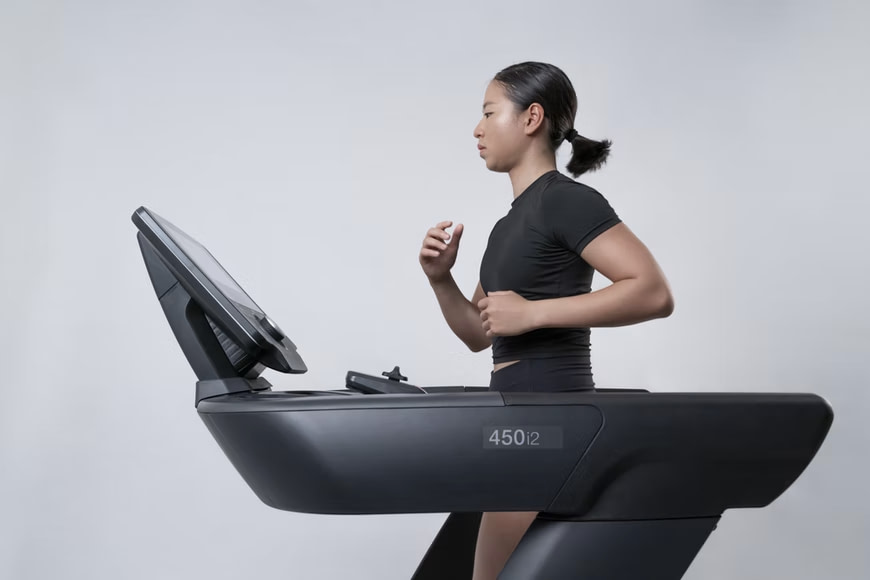Because more consumers are focusing on their health and wellness than ever before, the fitness industry has become one of the fastest growing industries in the world. It’s no secret that the emergence of fitness trackers and AI-driven equipment can be directly attributed to this progress. Despite the industry’s exponential growth, however, there’s a ton of useful data hanging around in fitness facilities that remains underutilized.
Proper data analysis is essential for bringing value and efficiency to a fitness business/gym, and it can quite literally be the driving force behind informed business decisions. For this reason, it’s important to understand what fitness analytics is and how to use it properly in a fitness setting.

What is fitness analytics?
Fitness analytics is a way to guide your fitness businesses to a better understanding of your consumer’s needs and behaviors. It’s a process that analyzes sports-related activities, so business leaders can make better-informed decisions.
Data analytics in the fitness industry is used to understand multiple things, including:
- gym attendance rates,
- in-app user behavior,
- gym attendees’ performance metrics,
- user preferences
- and plenty of other metrics.
All of these help gym and fitness businesses keep track of facility growth or setbacks. For example, gym leaders can analyze individual users by tracking how often they attend their facility. This gives greater insight into the direction of the facility and how likely it is to produce a pool of loyal customers.
Further, gym analytics is ideal for interpreting equipment usage and ensuring it’s well-managed. By knowing how often a piece of equipment is being used, gym owners can better understand how often they need scheduled maintenance or updates.
Gyms that offer classes, courses, or digital content can use gym analytics to see which services clients seem to be drawn to most and offer the most prominent ones more often in the future.
On that note, there are three primary types of data analytics that benefit fitness settings:
- descriptive data – tracks consumer behavior (e.g., workout history, goals, and progress)
- predictive analytics – is used to make a future prediction by taking the descriptive data available into account (e.g., using the available information to predict how likely the member is to churn)
- prescriptive analytics – combines both of the above analytics types to come up with effective solutions (e.g., recommending certain classes, offering discounts for preferred products/services, and inviting members to attend challenges/activities hosted by the gym to increase their engagement and prevent churn).

How fitness data analytics can help your business
If used correctly, fitness data analytics can make a huge difference in the success of your fitness facility/gym. For the most part, they’re ideal for understanding consumer behavior, making informed decisions, and overall strengthening the customer experience.
Understanding consumer behavior
Any business that strives to see long-term success must have a deep understanding of their customers’ wants and needs. Fortunately, fitness data analytics is a great tool for comprehending things like booking patterns for classes, preferred workouts, and which products people enjoy most.
Understanding customers’ wants and needs is an essential piece of the fitness data analytics puzzle. At its core, fitness data analytics paves the way for enhanced marketing efforts and facility offerings.
Making informed decisions
Fitness data analytics is especially beneficial for making business-related decisions. Once customer behaviors are better understood, the path for better decision-making processes begins to unfold. This includes knowing what products to offer, which products/services are most likely to benefit from a promotion, and where the best place is to market them.
Taking note of patterns is perhaps one of the most effective ways to make informed decisions. For example, you might find that those who visit the gym once per week or every other week are less likely to become long-term customers than those who come in multiple times each week. From there, you might strategize on what services could be offered to those who are unable to attend as frequently (or who may be lacking the motivation to attend).
Strengthening the customer experience
Gym analytics can help build trust and strengthen customer relationships through personalized experiences, leading to lower retention rates. Once customer needs are being heard and met, long-term loyalty is sure to go up, leaving you with opportunities for scaling and growth.
Read more: Grow your fitness business online
How is data used in health and fitness?
There are several ways you can use data analytics in the fitness industry. One way that gym owners are seeing growth comes from developing their own fitness apps. Building their very own application provides an avenue for gaining access to data derived from wearable devices, such as individuals’ Fitbits or Apple Watches. For more information on fitness app development, check out how to make a fitness app.
Now, let’s look at some of the most common ways to reap the benefits of health and fitness data.

An individualized approach to customer needs
Wearable and IoT devices are continuously working to track people’s daily activity. They’re able to monitor things like heart rate, physical activity, eating habits, and even oxygen levels (on select devices). This data is like a gold mine for gym owners because it provides detailed insight into people’s habits and health status.
Being able to tap into something like this through apps, for example, allows for better analysis of what times people train, for how long they work out, and how often. However, building online fitness applications with such capabilities can be quite intimidating for those who are not tech-savvy. That’s why it’s important to know what resources and app development services are available. Fortunately, selecting the best fitness app development company doesn’t have to be overwhelming.
Knowing where consumers are at on their journey
Locating the appropriate data analytics in the fitness industry is going to set any facility up for success, and understanding the customer’s journey on the analytical front is so important. Tracking fitness data allows gym owners to understand what points their customers are starting at and whether they’re making progress or not.
If a customer seems to be making no advancements in their fitness journey, it could be that they are not attending as often as they need to reach their desired goals. Fortunately, data can be cross-referenced so educated conclusions like this can be reached.
Increasing service and product sales
Utilizing analytics in the fitness industry not only allows for access to behavioral data (e.g., data derived from wearable devices) but also provides insights into an entire fitness ecosystem.
For example, if a fitness studio used gym analytics to track data, they could suggest appropriate offers and promotions to customers. This data includes:
- assessing which equipment is being logged into,
- which classes are being attended most,
- and what training plans people prefer within their fitness app.
Maybe they see that yoga classes are filling up quicker than any other offered service, so they decide to start selling yoga mats, blocks, and bands.
Personalization
Personalization can be obtained through tracking which equipment a given customer commonly uses, such as a treadmill, or which classes they attend, and giving them content relevant to their preferences. In the treadmill example, a facility might show relevant running content to the customer within their app. Alternatively, they could also consider showing content directly from the treadmill’s screen.

Upping user engagement while lowering retention
By personalizing experiences, user engagement is sure to intensify while retention slows down. In fact, a Salesforce survey of over 7,000 customers found that 57% were willing to share their personal data for special discounts and offers.
Personalized messages and experiences are a way to make customers feel valued and more likely to continue with their membership plan (or even advance to a higher-level membership). If a fitness app can help lead them to their desired results, brand interaction will increase. In addition to tracking equipment usage and attendance habits, apps are beneficial for tracking goals, objectives, and transactions as well.
Lead generation
Historical data that is derived from customer habits can be used to create a target audience of customers. For example, a facility might find that males between the ages of 30-40 years old and females between 20-30 years old are more likely to attend their gym. Therefore, the facility chooses to market its services and products in areas where that demographic frequents.
Data analytics – a vital tool in the fitness industry
Data analytics in the fitness industry is the driving force behind effective business-related decisions. They’re especially important for facility leaders looking to build an effective application that helps clients reach their desired goals. If you’re a gym owner, then it’s essential for you to know what equipment is being used most, which services are desired, and who their target audience should be.
From marketing to personalized experiences and producing longevity, data analytics will continue to offer numerous advantages to fitness businesses everywhere. With these advantages comes saved time, money, and, overall, higher customer satisfaction.
